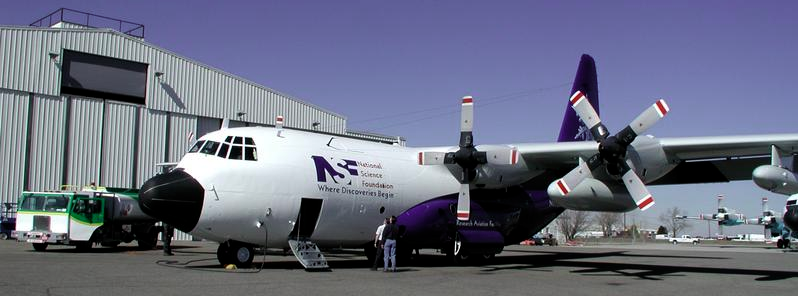Holographic imaging provides new insight into turbulent mixing within clouds

A new research conducted by scientists from Michigan Technological University, the National Center for Atmospheric Research (NCAR) and Mainz University, has analyzed the mixing of particles of dry and water-saturated air within the clouds. The experiment was performed using a new technique of holographic imaging and an airborne laboratory. Research results were published in the Science journal on October 2, 2015.
Optical properties and precipitation efficiency of atmospheric clouds are largely determined by turbulent mixing with their environment. This mixing process has now, for the first time, been analyzed by utilizing the techniques of holographic imaging.
"Clouds are the most conspicuous and dynamic feature of the Earth's atmosphere," said Chungu Lu, a program director in the National Science Foundation's (NSF) Division of Atmospheric and Geospace Sciences, which funded the research.
"They play decisive roles in forecasting weather and assessing climate change. The initiation, development and dissipation of clouds depend on interactions between cloud droplets and their air environment. This study offers an important understanding of how these interactions occur at the finest scales," explained Lu.
Sharp boundaries in the clouds form when dry air completely evaporates some water drops and leaves others unscathed. The scientist were particularly interested in exploring the cloud droplets, the smallest part of clouds. In order to study a group of droplets, Raymond Shaw, a Michigan Tech physicist, in cooperation with his science team has used the data from airplanes that flew through cumulus clouds in Wyoming and Colorado.
Aboard the plane, the team took detailed 3-D images with an instrument called the Holographic Detector for Clouds (HOLODEC–after the "Star Trek" holodeck). These particular clouds were made up only of liquid water. The size of the drops is a key part of cloud formation and mixing.
"You can take a certain amount of water and divide it up into many small drops or just a few big drops. And by dividing it up in different ways, you can change the optical properties of the clouds, making them brighter or darker, more or less reflective," Shaw said.
The HOLODEC instrument used in the research is a 15.24 cm (6 inches) in diameter and several meters long tube that samples aa volume of the cloud and provides unique perspective into cloud particle mixing. The instrument was carried on a C-130 airplane
Jeff Stith, who manages the Research Aviation Facility at NCAR, compares this particle mingling to a marbled cake. The wet air, filled with droplets, is like red cake; the dry air is like white cake. The scientists wanted to know how fine the boundaries are between red and white cake and how much pink cake there might be.
Using HOLODEC, the scientists observed clear boundaries–distinct lines between wet and dry air. It turned out that the size of the droplets remained unaffected, and that the ones that dissipated went away completely while the droplets left behind stayed of the same size.
Together the open space and large drops encourage clouds to grow. With enough mixing, the droplets tend to spread out more evenly, blurring the distinct boundaries.
The experiment has been more than a decade in the making. Looking at the data gathered was only possible with high-end graphics cards, the kind favored by hardcore gamers. Further processing of the collected data will enable Shaw and the research team to visualize mixing in clouds and provide insights into how to improve existing weather and climate models.
Sources: National Science Foundation, The Abstract of the paper – Science
Reference:
- "Holographic measurements of inhomogeneous cloud mixing at the centimeter scale" – Matthew J. Beals, Jacob P. Fugal, Raymond A. Shaw, Jiang Lu, Scott M. Spuler, Jeffrey L. Stith – Science (2015) – DOI: 10.1126/science.aab0751
Featured image: C-130, a sophisticated airborne laboratory. Image credit: NCAR.

Commenting rules and guidelines
We value the thoughts and opinions of our readers and welcome healthy discussions on our website. In order to maintain a respectful and positive community, we ask that all commenters follow these rules:
We reserve the right to remove any comments that violate these rules. By commenting on our website, you agree to abide by these guidelines. Thank you for helping to create a positive and welcoming environment for all.